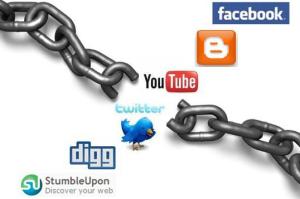
This post is a complement to a podcast episode of Social Entrepreneur with Nathan A. Webster, of which I am a monthly contributor. To listen to the episode related to this topic click below.
We’re all living online – so your organization should be, too. But there are so many platforms and so much to say: so how do you manage it?
It’s important to be comprehensive when thinking about social media for nonprofits: so, let’s think about the classic questions:
Who? What? Where? When? Why? How?
- Who? Who are you looking to communicate to with your social media posts? Current donors, prospective donors, clients, volunteers, the general public? This decision will help inform which platforms you should be active on.
- What? What content do you want to share on social media? Your organization is doing so much at any given time, so think about what you want to share with your followers. This can include: stories, facts, history, internal information, news related to your mission, and more. It’s also a good idea to be thoughtful about sharing posts of similar or partner organizations – this can help expand your reach and also position your organization as an expert.
- Where? Which platforms do you want to be on? Think quality over quantity here: instead of getting on everything, get on the spaces that 1) your current donors and constituents are on and 2) your desired donors are. Are you going to do more longform posts? Think Facebook or LinkedIn. Connect with other organizations and share out more regularly? Twitter. Do you have amazing photography? Instagram.
- When? Just like any other communications, map out a calendar that ensures that you are posting consistently and not only about one topic. Frequency depends on platform: Twitter is constantly changing, so you’ll post way more on there than Facebook, for example.
- Why? Why be on social media? It’s an opportunity for you to engage with your community in a unique way that they are already doing – you’re meeting them where they are. It’s very donor centric.
- How? Who’s going to do it? Some nonprofits keep social media management in the marketing team, some have a development staff member do it. Some have multiple people involved and some just have one (or less than one!). Make sure that person has a clear idea of what the organizational voice is.
As a fundraising person, I’d be remiss talking about social media without mentioning one of the important social media days for the year for nonprofits – Giving Tuesday.
Giving Tuesday
Giving Tuesday aka #GivingTuesday takes place the Tuesday after Thanksgiving every year. It’s a day that celebrates nonprofits and donors, and encourages contributions. Some nonprofits put a lot of efforts and energy into this day, and others send a simple email and do a quick social media post. It’s up to you and your organization what feels best, but know that it’s a very heavily saturated fundraising day.
But: it’s a heavily saturated fundraising day for a reason. So I believe it’s important to at least do something. At the bare minimum, I recommend doing one simple email blast to all of your lists and one social media post on all of your platforms. The next step is mobilizing your board by sending them an email template that they can forward to their contacts as well as links to the social media posts so that they can share them. The more your message is amplified, the better!
If you want to go crazy on that day, you can be pushing out communications about it for weeks in advance, have matching gifts lined up, and even do a live event to encourage donations. Then you’ll want to post on social media a whole bunch on the day of, and don’t forget to say thank you after.
Next month we’re going to talk about crowdfunding and peer to peer fundraising: so stay tuned for that, which is also related to social media. For now, get a plan in place for your social media approach for the end of the year: because it’s coming up fast!
-N.C.



